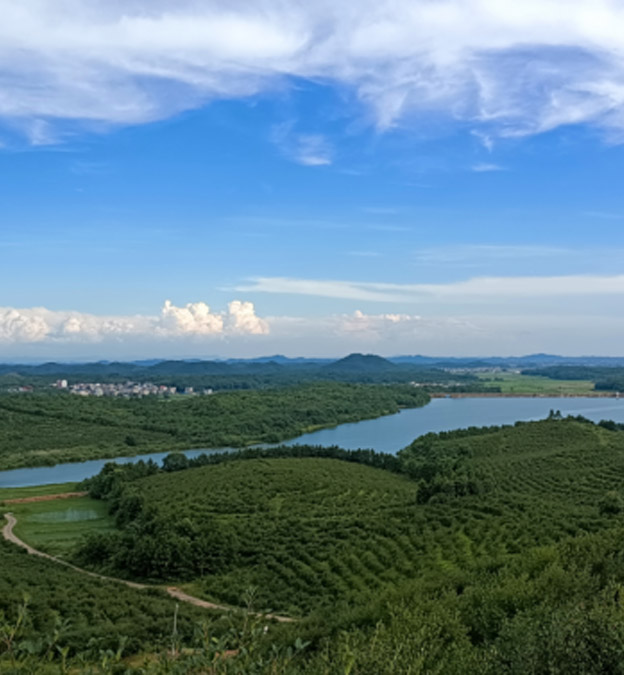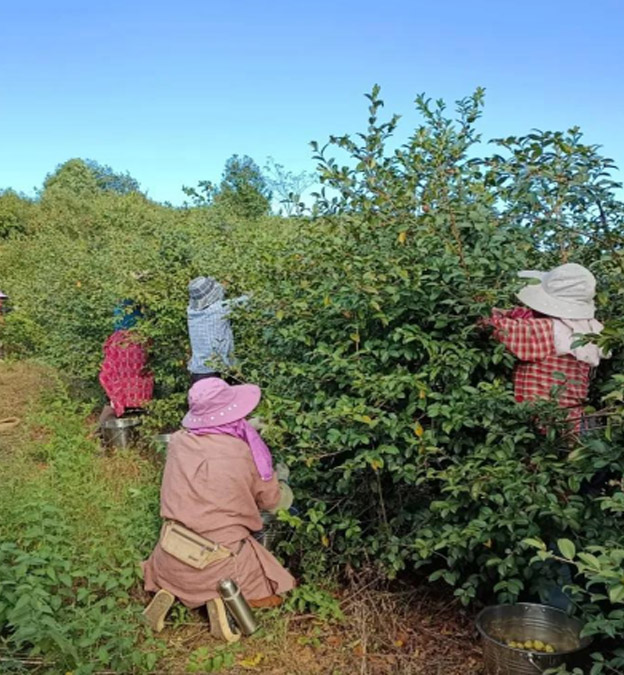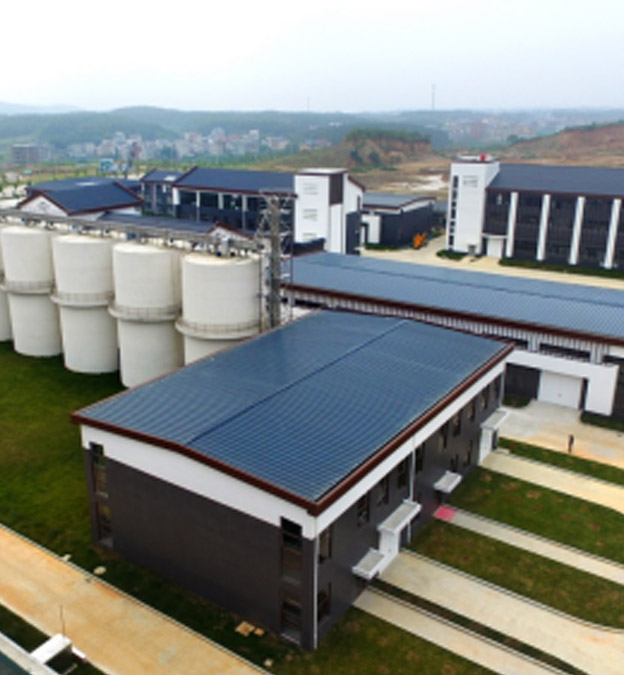1. Soil and atmospheric requirements
The soil must comply with GB 15618 Soil Environmental Quality and Agricultural Land Soil Pollution Risk Control Standards, and be tested in accordance with national regulations. The atmosphere must comply with the GB 3095 environmental air quality standard (based on the data released by the local government).
2. Variety requirements for Camellia oleifera
Tree seedlings: must be non genetically modified (with proof provided by a legitimate organization). High yield and high-quality varieties suitable for the local environment and climate should be introduced, and inferior varieties should be eliminated.
3. Requirements for Planting Process Control
Fertilization requirements:1. Soil fertility should be maintained and improved through appropriate cultivation and cultivation measures, including: recovery, regeneration, and supplementation of soil organic matter and nutrients to supplement the organic matter and nutrients taken away from the soil due to plant harvesting. 2. Use your own company's tea meal or locally reputable ones Fertilizer processed from non genetically modified raw materials. Apply feces and urine to plants, but when needed, they should be thoroughly decomposed and treated harmless, and should not come into contact with the edible parts of the plants. 3. Natural mineral fertilizers with low solubility can be used, but such fertilizers must not be used as Substitutes for nutrient cycling in the system. Mineral fertilizers can only be used as long-term fertilizers and maintain their natural components. Chemical treatment should not be used to improve their solubility, and mineral nitrogen fertilizers should not be used. 4. Biofertilizers can be used, and to fully decompose the compost, they can be added during the composting process Microorganisms from nature should be added, but genetically modified organisms and their products should not be used.
Pest control measures:The basic principle for the prevention and control of diseases, pests, and weeds is to start from the agricultural ecosystem and adopt ecological management measures such as pest control and grass control. The use of pesticides, herbicides, insecticides, fungicides, etc. that do not meet the organic standards of the European Union, the United States, Japan, and China is absolutely prohibited, And it is strictly required that the management and maintenance contractors shall not carry pesticides, herbicides, insecticides, fungicides, etc. into the base area without authorization. Once discovered, the relevant responsible persons will be severely punished.
Irrigation water requirements:During the dry season of Camellia oleifera forest, when it is necessary to replenish water, the irrigation water must not be contaminated by industrial discharge or other pollution sources, and meet the irrigation water quality standard GB5084 for farmland irrigation.
Fertilization requirements, pest control, irrigation water and other agricultural activities shall be strictly implemented in accordance with the highest standards of organic product standards in the European Union, the United States, Japan, China, and other countries.
Pruning requirements:The pruning of Camellia oleifera should be based on the shape of the tree and the branches, with even distribution of branches on the crown, sparse branches and leaves in the inner chamber, good ventilation and light transmission inside the crown, and achieving a three-dimensional effect inside and outside the crown. Mainly, it is to cut off the basal small branches below 30 centimeters of the main trunk, as well as the diseased and insect branches, overlapping branches on the tree Slim branches, inward branches, dense branches, elongated branches, sparse and clustered branches, and the removal of sprouted branches at the base are beneficial for ventilation and light transmission. When crossing between plants, large branches with less flowering should be pruned to leave space to prevent sealing. Some trees have too many large branches, and 1-2 positions can be cut off appropriately A large branch with fewer flowers. Some trees have too many branches that have been crushed due to fruiting, and can be cut off from the break or base of the branches. After years of fruiting, large branches with weak growth and drooping at the top can be retracted to strong branches to facilitate the restoration of tree vigor and sustained high yields and stable harvests.















